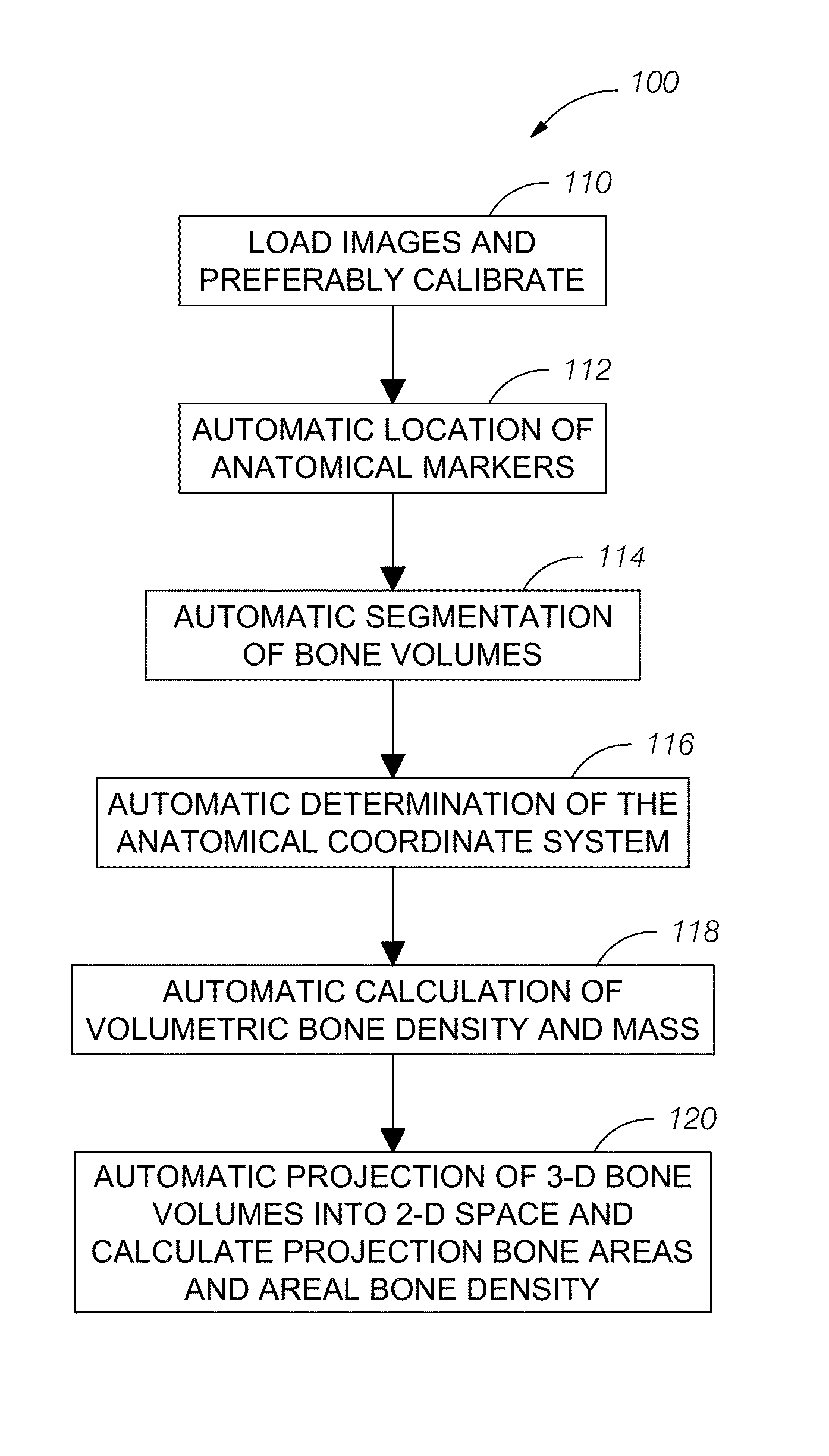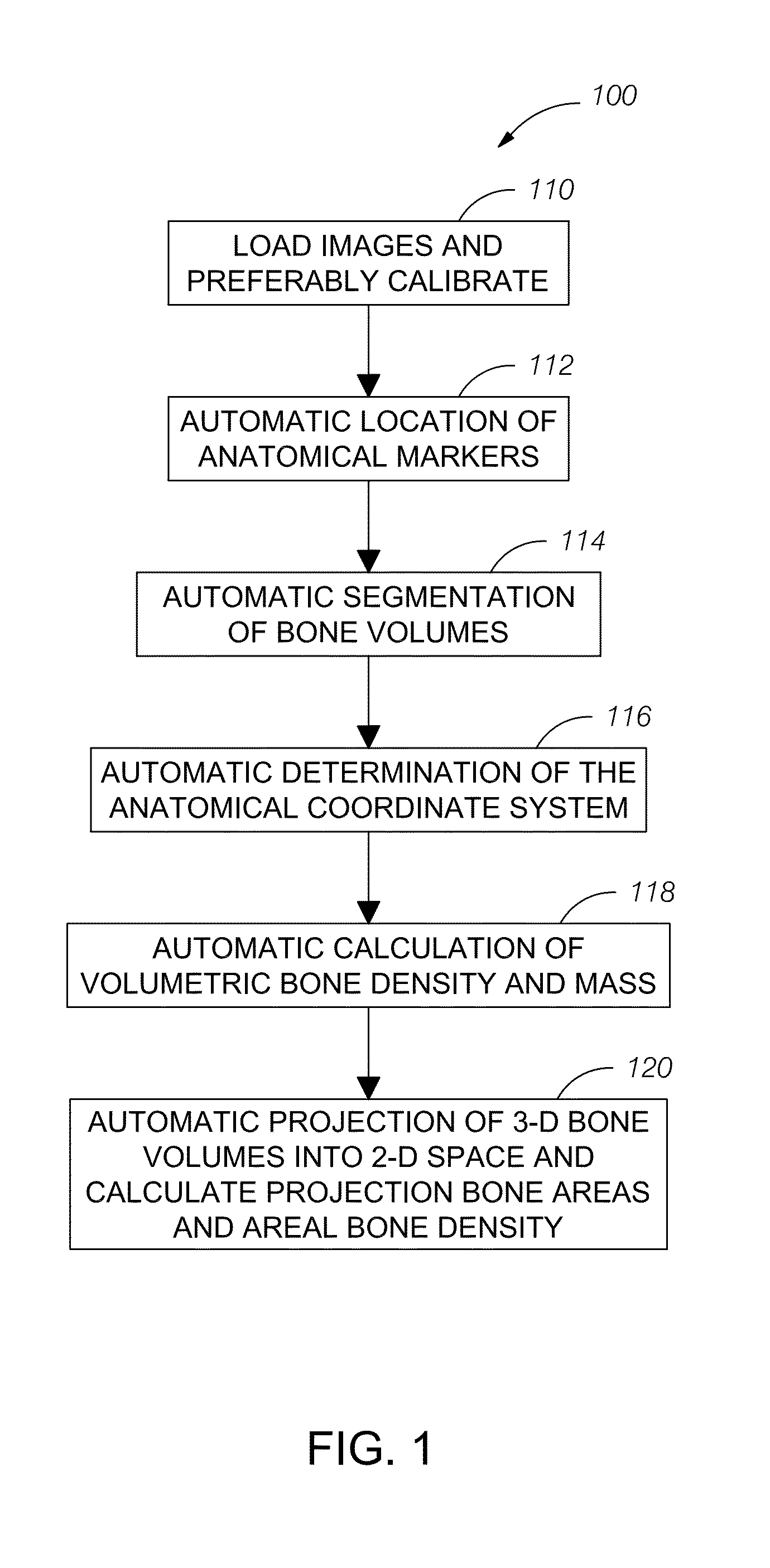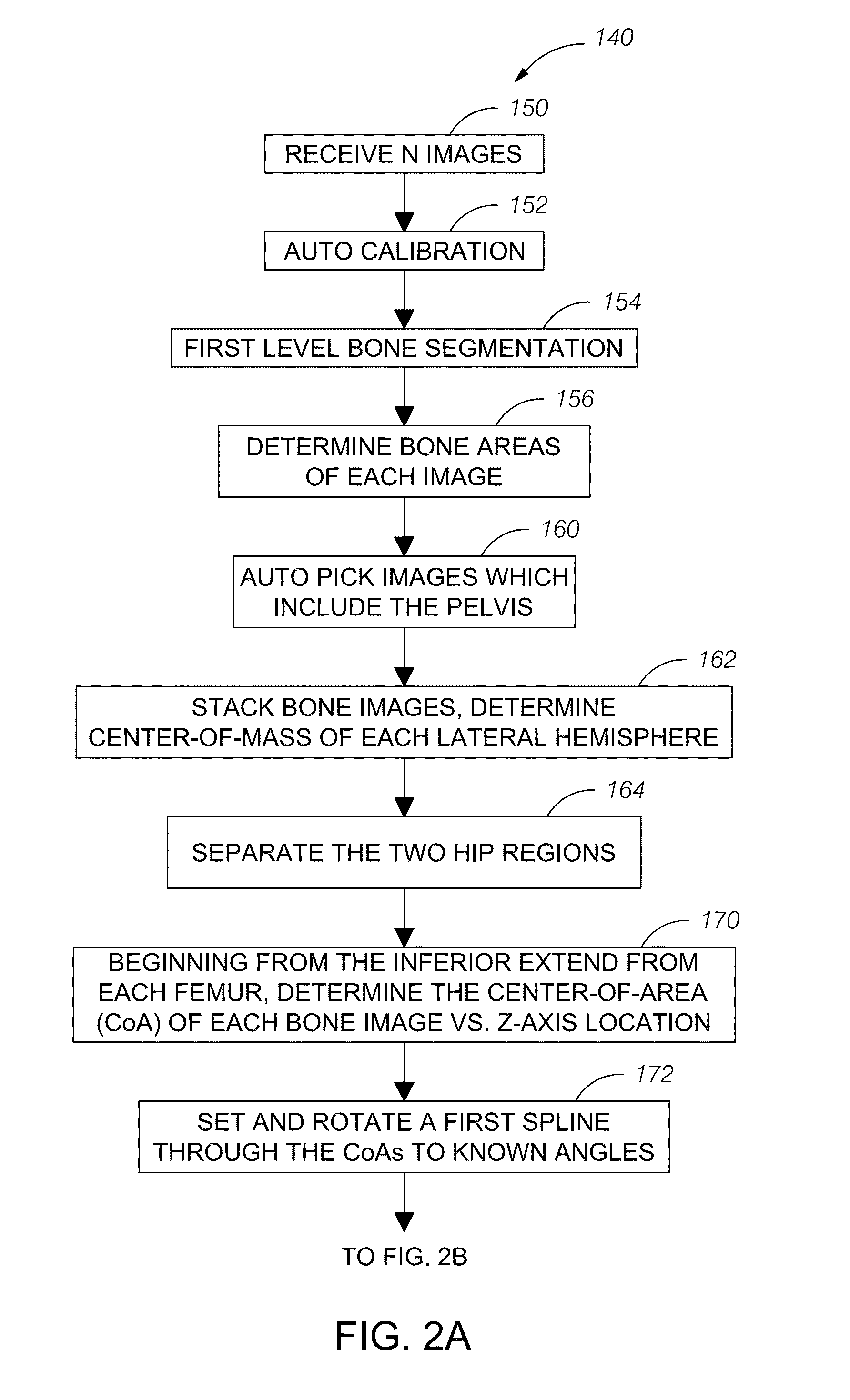Automatic method and system for measurements of bone density and structure of the hip from 3-D X-ray imaging devices
a technology of x-ray imaging and x-ray imaging device, which is applied in the field of 3d volumetric x-ray imaging, can solve the problems of loss of long-term precision, variability of bmd measurements of hips, and prior art bmd methods that are not applicable to the measurement of much different anatomy of hips, so as to achieve maximum precision and reduce operator time and effort
- Summary
- Abstract
- Description
- Claims
- Application Information
AI Technical Summary
Benefits of technology
Problems solved by technology
Method used
Image
Examples
Embodiment Construction
[0029]A complete series of volumetric images making up an exam are analyzed by various computer algorithms as they are loaded into the computer. In a first preferred embodiment, an algorithm to automatically locate a calibration phantom and apply calibration of the images is completed in background mode without operator input.
[0030]FIG. 1 illustrates a flowchart 100 of an overview of the automated methods to measure bone density of the proximal femur. In a step 110, a plurality (N) of images that include the femur are loaded. The images are generated by an imaging device shown schematically in FIG. 11 (described below). Preferably, but not necessarily, the images are calibrated with external phantoms or with the internal tissues of a subject. Preferably, the calibration occurs using the calibration equation disclosed, for example, in U.S. Pat. No. 6,990,922. For example, the calibration equation is determined by regression analysis. Through a series of automated algorithms, anatomic...
PUM
 Login to View More
Login to View More Abstract
Description
Claims
Application Information
 Login to View More
Login to View More - R&D
- Intellectual Property
- Life Sciences
- Materials
- Tech Scout
- Unparalleled Data Quality
- Higher Quality Content
- 60% Fewer Hallucinations
Browse by: Latest US Patents, China's latest patents, Technical Efficacy Thesaurus, Application Domain, Technology Topic, Popular Technical Reports.
© 2025 PatSnap. All rights reserved.Legal|Privacy policy|Modern Slavery Act Transparency Statement|Sitemap|About US| Contact US: help@patsnap.com



